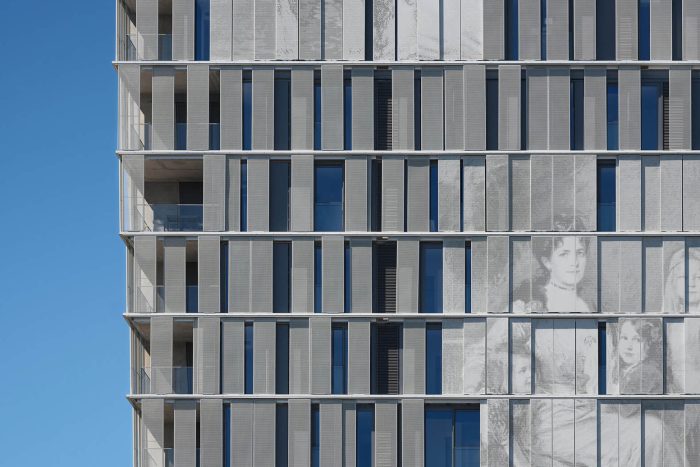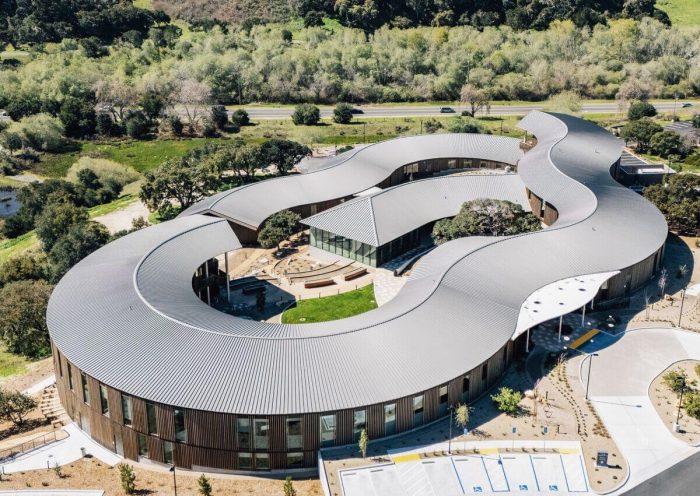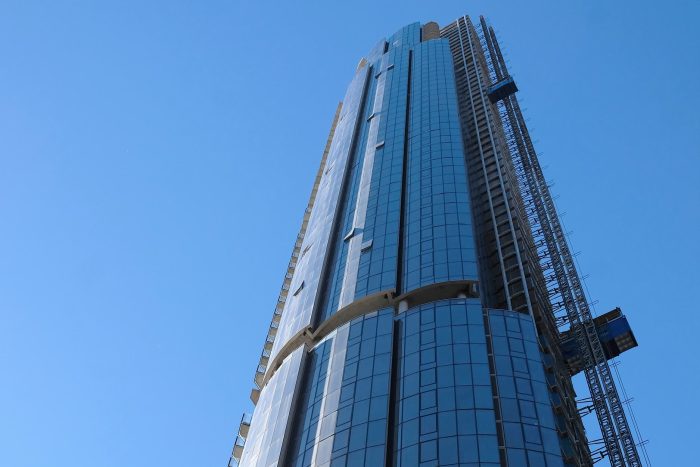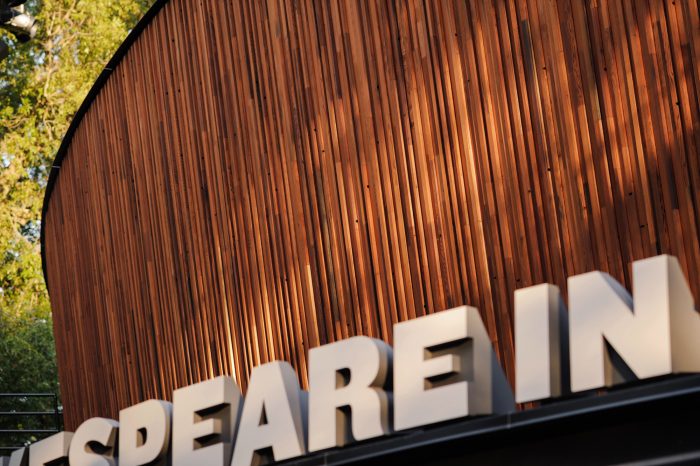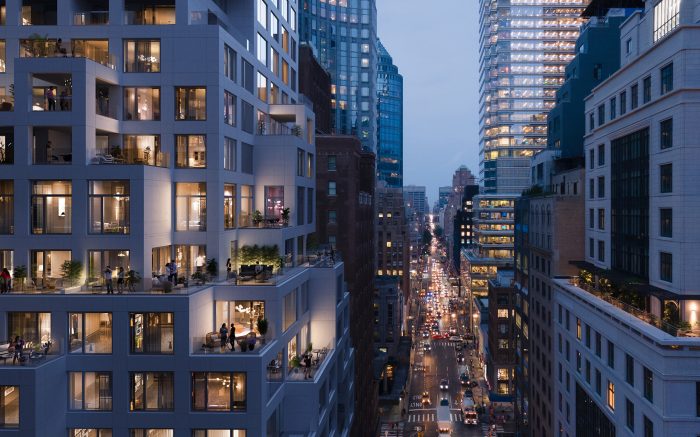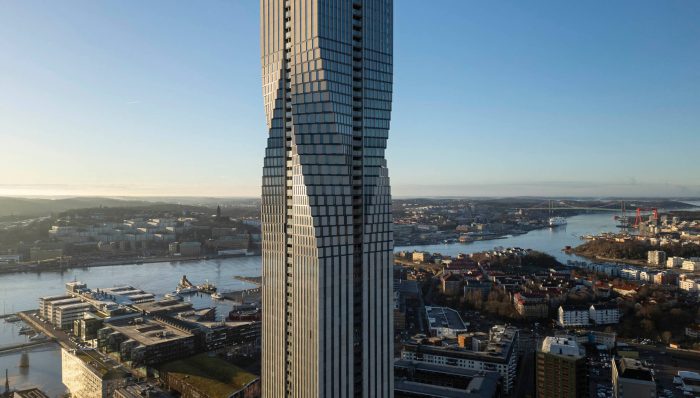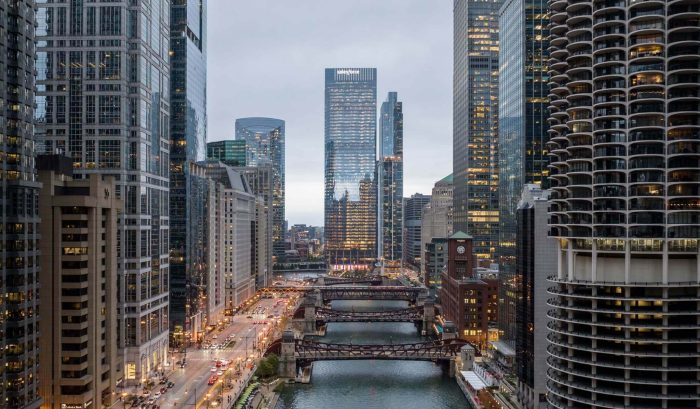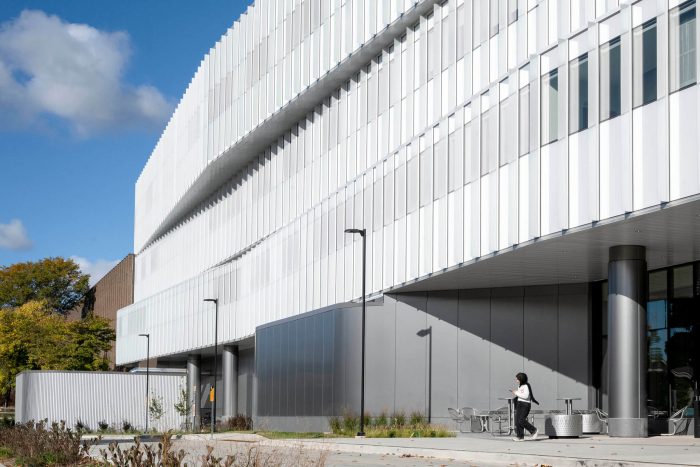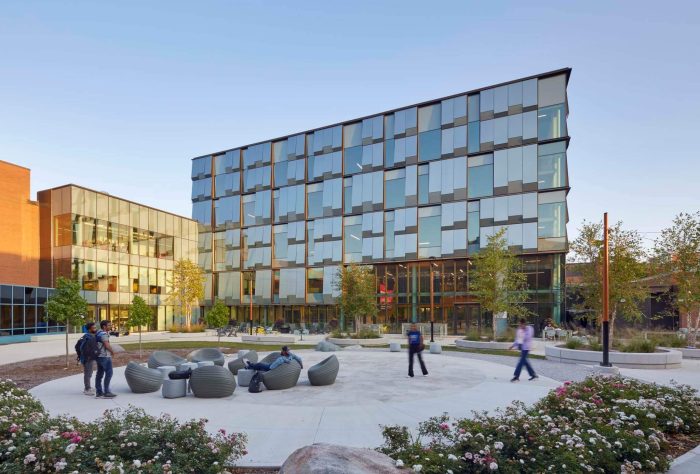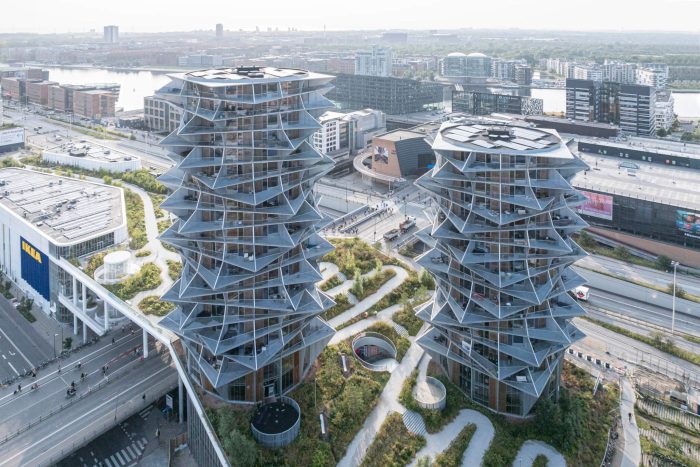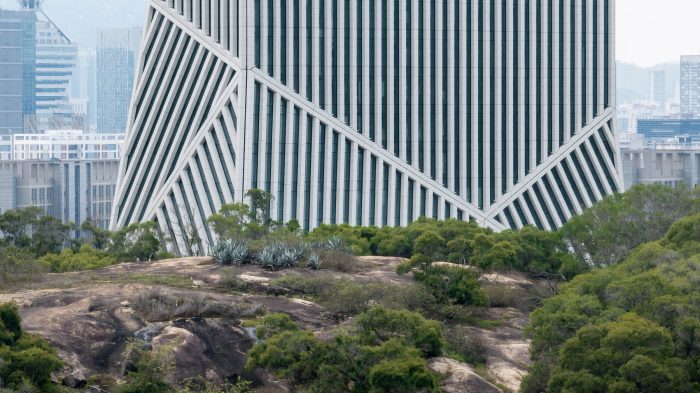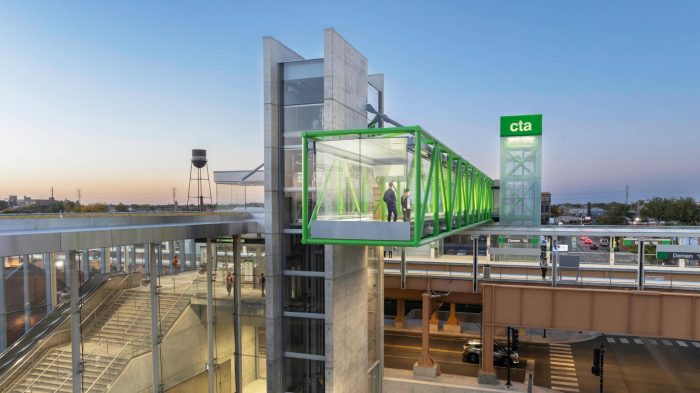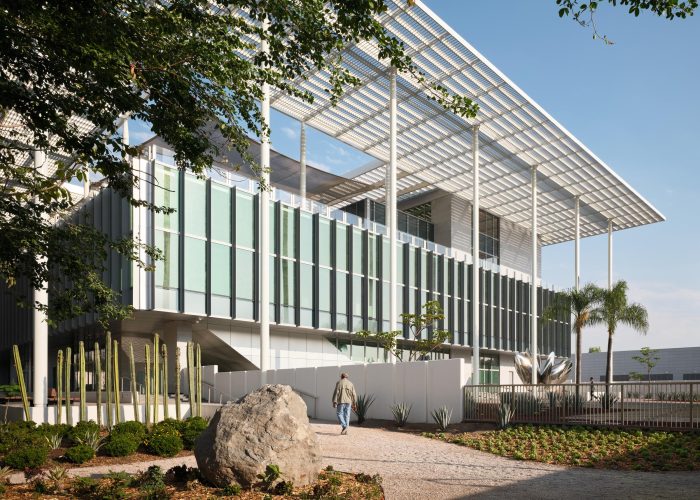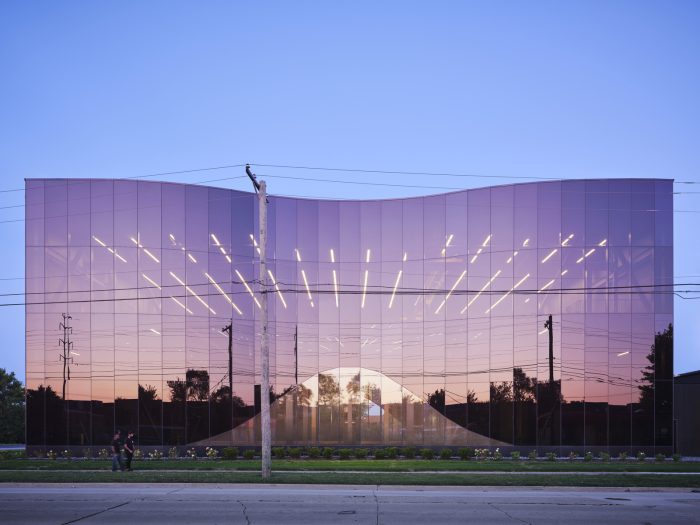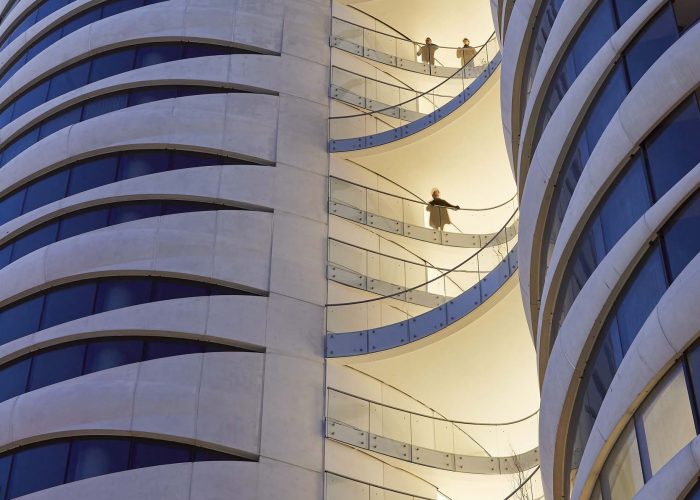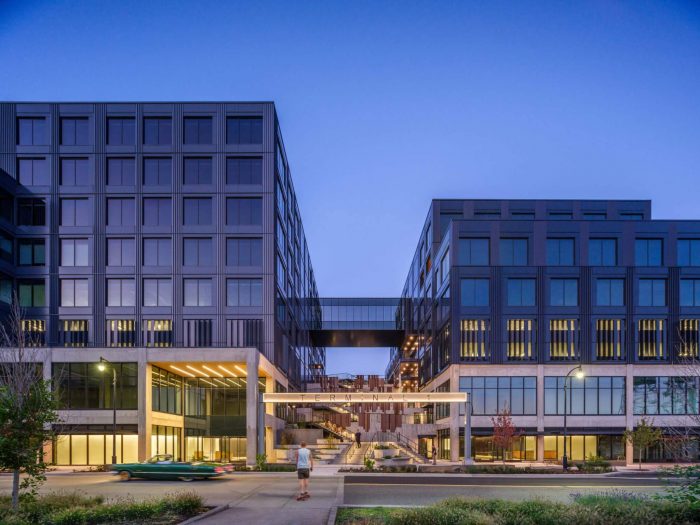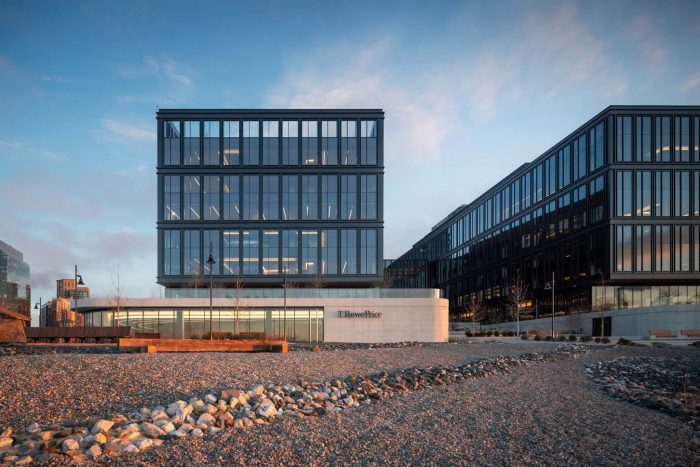On Seattle’s First Hill, across from the Frye Art Museum, Perkins&Will has designed a pair of 33-story residential towers for Westbank. The twin structures, known as Museum House, lean slightly away from one another as a result of incremental stepping at each floor. The offset produces a tapered void between them that frames a slice of sky and culminates in a glazed skybridge linking the uppermost levels.
On December 11, the Facades+ conference series returns to Los Angeles with an exciting program developed in collaboration with NBBJ, followed by a day of interactive workshops on December 12. The event will take place at the Sheraton Grand Los Angeles, where attendees are also encouraged to explore the Methods + Materials gallery featuring 45 exhibiting building-product companies.
At the corner of Sixth Avenue and West 37th Street, in Manhattan’s Garment District, a new tower is taking shape. Designed by C3D Architecture and developed by SIONI Group, 989 Sixth Avenue is now visible on the skyline between Bryant Park and the Empire State Building. At the street level, the building’s podium adjoins the classic, revival-style Greenwich Savings Bank Building—better known as the Haier Building—a 1922 York & Sawyer landmark of Indiana limestone, bronze, and granite. Above, the tower extends upward as a composition of layered, curved extrusions.
In the middle of Central Park, an old theater has taken on a new look that might feel familiar to many New Yorkers. The Delacorte Theater—home to The Public Theater’s Shakespeare in the Park—is now wrapped in vertical redwood slats reclaimed from 25 decommissioned New York City water towers.
Facades+ is excited to announce a new collaboration with the All Things Facades podcast, hosted by Adrian Lowenstein. To kick things off, All Things Facades dives into energy codes with AIRLIT Studio founder Alejandra Menchaca.
Few New York architecture firms have so persistently reworked the massing of the urban midrise as ODA. Over the past two decades, the firm has gained a reputation for turning building profiles into stepped compositions of solids and voids, as seen in residential buildings like 15 Union Square West and 101 West 14th Street. Today, ODA reaches new heights. With a slew of upcoming towers, it now brings its signature to the vertical realm. In a conversation with ODA founder Eran Chen, Chen spoke about ODA’s approach to beautifying cities by extending its understanding of urban life vertically.
At Facades+ Toronto on September 26, hosted by AN with Diamond Schmitt, a roundtable brought together David Bowick of Blackwell Structural Engineers, Judith Martin from the City of Toronto, and Kevin Rocchi of mass timber manufacturer Element5, moderated by Diamond Schmitt’s Dieter Janssen. The discussion focused on the realities of industrialized building, where manufacturing precision meets jobsite imperfection and what it takes to bring mass timber and modular systems into the mainstream.
On October 17, the Facades+ conference series returns to Boston. The event, located at the Westin Copley Place, offers a full day of programming developed in collaboration with AECOM. Attendees are also encouraged to visit the Methods + Materials gallery, which features 27 exhibiting building product companies.
The new Life Sciences Center at 2 Harbor Street, located at the edge of Boston’s Marine Industrial Park, appears as a copper-orange grid. With reflective blue glass seeming to vanish against the sky, its facade of orange frames shifts in scale—squat at the base, taller higher up—such that the primary massing reads as 4 stories, though it actually rises 8.
Shining high above lowrise Gothenburg, Sweden, Karlatornet is now the tallest structure in Scandinavia. Like many solitary towers rising in cities once unconcerned with such heights, the 807-foot luxury highrise stands alone among clouds.
Last week at Facades+ Chicago, AEC experts shared how their teams are working to reduce embodied carbon while responding to tariffs, how manufacturing facilities are cutting waste and improving recyclability, and how new workflows play a crucial role in achieving design excellence.
Approached from an oblique angle, a facade of opaque and transparent glass at the University of Wisconsin–Milwaukee’s (UWM) new Chemistry Building appears to defy its own physicality. Windows look as if extending past their edges. Reflective elements register sometimes as transparent, other times as solid. Vertical fins lining stacked, undulating surfaces suggest an ephemeral field of continuities. An entire assembly flickers with sky. Then, seen head-on, order comes into focus—horizontal bands marked with pronounced gray joint lines, cut evenly by slender fin profiles less than one-inch thick. A regular system of clear and back-painted glazing modulates slight deviations, keeping edges crisp and the overall volume legible.
On September 26, the Facades+ conference series will be held in Toronto at the Hyatt Regency. The event offers a full day of programming developed in collaboration with Diamond Schmitt. Attendees are also encouraged to visit the Methods + Materials gallery, which features 27 exhibiting building product companies.
Torqued beside the rail lines at Dybbølsbro Station, the Kaktus Towers cut serrated profiles against the Copenhagen sky. Designed by Bjarke Ingels Group (BIG), the seemingly—but not quite—twisted micro-living towers mark the edge of Vesterbro, a former industrial zone now undergoing a new wave of development. Rising from an elevated green plateau—about 65 feet above the street, spanning a neighboring highway and IKEA—the duplicate towers induce a vicarious sort of thrill. Two gigantic biophilic figures mimic each other in a game of suggested motion. With balconies arranged in different orientations, their protruding, puzzle-like facades are both amusing and difficult to track. They seem almost to beg for reverse-engineering.
In 2004, the Seattle Central Library turned heads with its continuous skin that wrapped programmatic elements into an iconic, irregular whole. Two decades since and halfway around the world, OMA has employed a similar premise for the JOMOO Headquarters tower in Xiamen, a coastal city undergoing high-density urbanization in southeastern China. Yet where the acclaimed library in Seattle is transparent and wholly crystalline, the recently completed JOMOO building is denser, stiffer, with a disjunctive form. Balancing sculptural ambition with corporate restraint, its wrapper performs complexity with a straight face.
On September 12, the Facades+ conference series will be held in Chicago at the voco Chicago Downtown. The event offers a full day of programming developed in collaboration with SmithGroup principals Matt Dumich, Coty Sandberg, and Jason Smith.
The Miller Hull Partnership designed the new U.S. Consulate General in Guadalajara, Mexico. The brief called for a ground-up structure to support American diplomacy while welcoming both Mexican and U.S. citizens in the state of Jalisco. The building’s facade is particularly striking, clad in a curtain wall of proprietary ballistic glass that invites employees and visitors to gaze out at the picturesque trees. Above, a steel canopy shades the entire complex, referencing the vernacular of the palapa.
This fall, AN’s Facades+ conference series will take place in five North American cities. In each city attendees will have the opportunity to tune into presentations on facade design for a range of building typologies from airports to retail shops to commercial developments, among other roundtable discussions and talks. This year marks the event’s 13th anniversary.
Since its founding in 1896, the International Association of Iron Workers (IW) has trained and represented the skilled labor force behind buildings, infrastructure, shipbuilding, and metal fabrication across the U.S. and Canada. Last year, in Broadview, Illinois—just 12 miles west of downtown Chicago, the 19th-century testing ground of steel-frame construction—Ironworkers Local 63 opened a new training
In the City of Glass, tall towers have tended to look alike. The homogenized skyline of Vancouver, British Columbia emerged during a construction boom in the 1990s. As Canada’s most expensive city rezones to increase density in the face of a worsening housing crisis, the skyline’s once implacable uniformity has begun to change, largely at
In Boston’s Kendall Square, where dense research programs and repetitive building types define much of the streetscape, the facade of the Ragon Institute manages to make a statement. After years spread across multiple campuses, the institute—dedicated to advancing immunology and vaccine research—now occupies a unified biomedical research center, bringing together scientists from Harvard, MIT, and Mass General Brigham. Designed by Payette, the new facility features an eye-catching facade of tapered aluminum fins that create variation and depth while enhancing energy performance. Integrated with a high-efficiency, unitized curtain wall system, the fins filter light, shape views, and hide mechanical equipment. Their variation in spacing and profile, driven by internal programs and solar exposure, brings a shifting sense of enclosure to the uniform glass between them; depending on the angle, the building appears as solid, transparent, or somewhere between.
Today, we might think of sewage containment as a problem of the 19th century, when urban areas developed robust infrastructure to properly collect and dispose of human waste. However, in Arklow, a coastal town on Ireland’s eastern seaboard, this problem was never fully addressed. For close to a century, the municipality pumped raw sewage directly into the River Avoca, where it traveled out to the Irish Sea, severely contaminating the water and nearby beaches.
For those who don’t know, there are actually two North American cities named Vancouver. The lesser-known Vancouver is in Washington State, along the Columbia River, a large, navigable waterway that forms the border with Oregon. The city began its life as a colonial fur trading outpost, and maintains a busy commercial port to this day because of
Like many postindustrial port cities, Baltimore has long struggled to reclaim its waterfront, which is interrupted and obscured by a series of derelict sites once devoted to shipping and manufacturing. One of the largest redevelopment projects addressing this underutilized space is an effort to remake Harbor Point, a 27-acre promontory that juts out into the Patapsco River.
